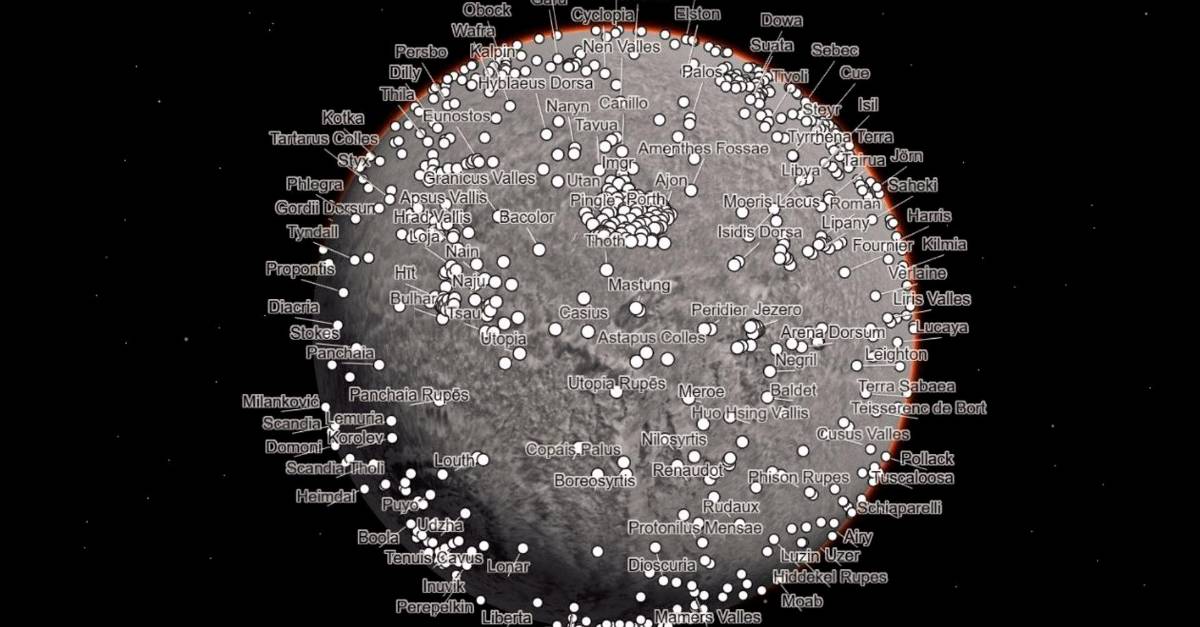07:26 AM
Rocks, impact craters and swirling dust trails are captured in fascinating detail in a new mosaic. Red planet Consisting of 110,000 images taken by the spacecraft’s senior black-and-white environmental camera, or CTX, the images have an area of nearly 25 square meters per pixel.
It does Global CTX Mosaic of tuesday The highest resolution global image of a planet ever made. When printed, this 5.7 trillion pixel (or 5.7 terapixel) mosaic would be large enough to cover. Rose Bowl Stadium in Pasadena, California.
How long did it take to do it?
Product Caltech Bruce Murray Planetary Imaging Laboratory, the mosaic took six years and tens of thousands of hours to create. It is so comprehensive that more than 120 peer-reviewed scientific articles have already cited the beta version. But tile is good enough for anyone to use.
“I wanted something accessible to everyone,” imaging scientist Jay Dixon, who leads the project and manages the Murray Lab, said in a statement. “School children can use it now. My mother who turned 78 can wear this now. The goal is to lower the barriers for those interested in exploring Mars.
CTX It is one of three cameras on board MROIt enabled NASA Jet Propulsion Laboratory In Southern California. One such camera, the High Resolution Imaging Science Experiment (HiRISE), provides color images of small surface features such as a dining table. Instead, CTX provides a broader view of the landscape around those features, helping scientists understand how they are related. Its ability to capture large expanses of terrain has made CTX particularly useful for detecting impact craters on the surface. A third camera, the Mars Color Imager (MARCI), operated by the same team operating CTX, produces a daily global map of Martian weather at extremely low spatial resolution.
Taking images since MRO arrived at Mars in 2006, CTX has documented nearly the entire Red Planet, making its images an ideal starting point for scientists when creating a map. Much like looking for a needle in a haystack and piecing together a puzzle at the same time, mapping requires downloading and browsing lots of images to find similar light conditions and clear skies.
How did they do it?
To create the new mosaic, Dixon developed an algorithm to match images based on the features they captured. The algorithm manually stitched together the remaining 13,000 mismatched images. The remaining spots in the mosaic represent areas of Mars that were not imaged by CTX or were obscured by clouds or dust when Dixon began work on the project.
JPL’s Mars scientist Laura Gerber commented on the new mosaic pattern. “I’ve wanted something like this for a long time,” Gerber said. “It’s a beautiful product of art and also useful for science.”
Gerber recently used the image to visit his favorite place on Mars: Medusae Fossae, a dusty region the size of Mongolia. Scientists don’t know exactly how it came to be; Gerber has proposed that it may be a pile of ash from a nearby volcano. With the click of a button on the CTX mosaic, you can see river channels meandering across the former, now dry, landscape.
Users can also navigate to areas like craters galle And jezeroAreas explored by rovers curiosity And Persistence From NASA, or arrival Olympus Mons, the highest volcano in the Solar System by adding topographic data from NASA’s Mars Global Surveyor mission. One of the mosaic’s notable features highlights the impact of craters across the planet, allowing viewers to see just how scarred the Martian surface is.





:quality(85)/cloudfront-us-east-1.images.arcpublishing.com/infobae/KTKFKR763RBZ5BDQZJ36S5QUHM.jpg)